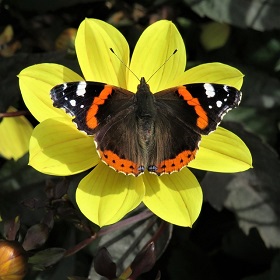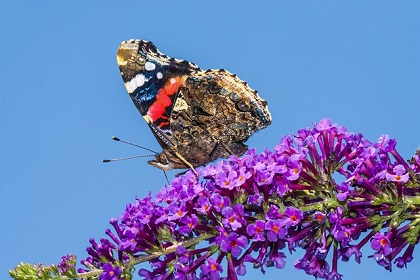News
Stories making wavesSky High
BUTTERFLY NUMBERS RISE WITH THE HEAT


There are very few positives to come out of global warming, but as our temperatures rise, so too are the numbers of Red Admiral butterflies, according to early findings from the organisers of the Big Butterfly Count which was last week coming to its finale.
This year's early results, before the survey was even complete, show why the citizen science project is so important, especially in helping scientists to understand how the weather and changing climate are affecting butterflies. Butterfly Conservation revealed that people throughout the country had already seen 170,000 sightings of Red Admiral which is an increase of 400% on the same period last year!
We normally see an emergence of fresh butterflies here from July onwards, following on from the females arrival in the UK in Spring from North America and continental Europe, to lay their eggs. But with temperatures rising, their need to return south in October or November is reducing, leading to a greater number staying and over-wintering here in the UK, particularly in the South of England.
So what can we do to help them through the autumn and winter? Red admirals love stinging nettles (their favourite plant on which to lay eggs) and are particularly partial to garden buddleias, flowering Ivy and rotting fruit. Climbing Ivy and shrubs are good plants to provide shelter as well butterfly houses and bug hotels - and you may even find one dormant in your log store or shed. If you discover one that's re-awakened inside your house with the central heating in the winter, chances are it will be too cold outside for it to survive, so you may need to help by reviving it with some honey or sugar dissolved in water and carefully catching it and relocating it into a shed or garage to roost until temperatures rise and it can find its' way out in the spring.
Footnote: Although fidgety in flight, changing their directions rapidly, Red Admirals are known to be unusually calm butterflies, often allowing close observation and using humans as perches, so hopefully they will let you guide them to safety!